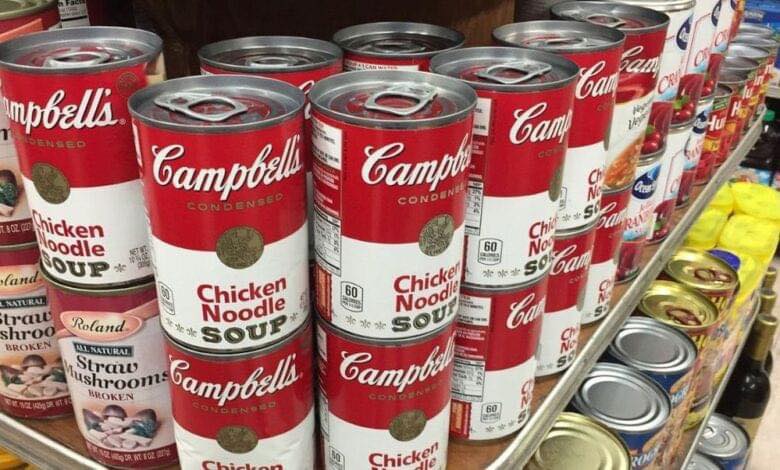Campbell’s Soup Gets Some Terrible News, Stock Up While You Can

“Campbell’s Soup: A Tale of Survival Amidst a Changing Market Landscape”
On the Brink: The Future of Campbell’s Soup
Campbell’s Soup, an iconic American brand cherished for nearly two centuries, is grappling with the possibility of closure.
The company’s struggle stems from an evolving consumer trend leaning towards natural, unprocessed food options, straying from the traditionally processed offerings Campbell’s is known for. In a bid to diversify its portfolio and cater to changing consumer demands, Campbell’s acquired various companies, an endeavor that unfortunately culminated in a hefty $9 billion debt.
Internal Strife Adding to the Mix
As if mounting debt and changing market dynamics weren’t challenging enough, a dispute within the company’s major shareholders has further exacerbated the situation. A power struggle has unfolded between the Dorrance family, owners of a substantial 40% of Campbell’s shares, and hedge fund manager Daniel Loeb of Third Point, a stakeholder owning approximately 7% of Campbell’s stock.
Loeb has been a vocal proponent for transformative changes in the company, pushing for rebranding initiatives that would even change the classic red and white cans that are synonymous with Campbell’s Soup. However, this proposed shift was met with resistance by the Dorrance family, leading to Loeb suing the company for alleged mismanagement.
A Step Towards Resolution and Change
Campbell’s responded to Loeb’s accusations with criticism, labeling his suggestions as “unoriginal and uninformed.” Despite this tense exchange, a recent development suggests the emergence of a middle ground.

Both parties have agreed to appoint two of the directors suggested by Third Point to the company’s board, indicating the possibility of more modifications on the horizon for Campbell’s as the company grapples with the reality of ensuring its survival.
The Implications of Campbell’s Potential Closure
The prospective closure of Campbell’s Soup resonates deeply with the brand’s dedicated consumer base and signifies a larger trend of shifting consumer preferences.
Campbell’s loyalists would view the closure as a substantial loss, while industry observers would see it as a further testament to the increasing consumer shift away from processed foods.
For the company to weather this storm and stay relevant in a rapidly evolving market, it will need to embrace adaptation and make considerable changes to its business model.
In conclusion, as Campbell’s navigates this turbulent period, its actions will not only determine its own future but also provide valuable insights into the larger narrative of how established brands can adapt to changing consumer trends and preferences.
Campbell’s journey will be closely watched, serving as a case study for businesses seeking to strike a balance between maintaining tradition and embracing change.




